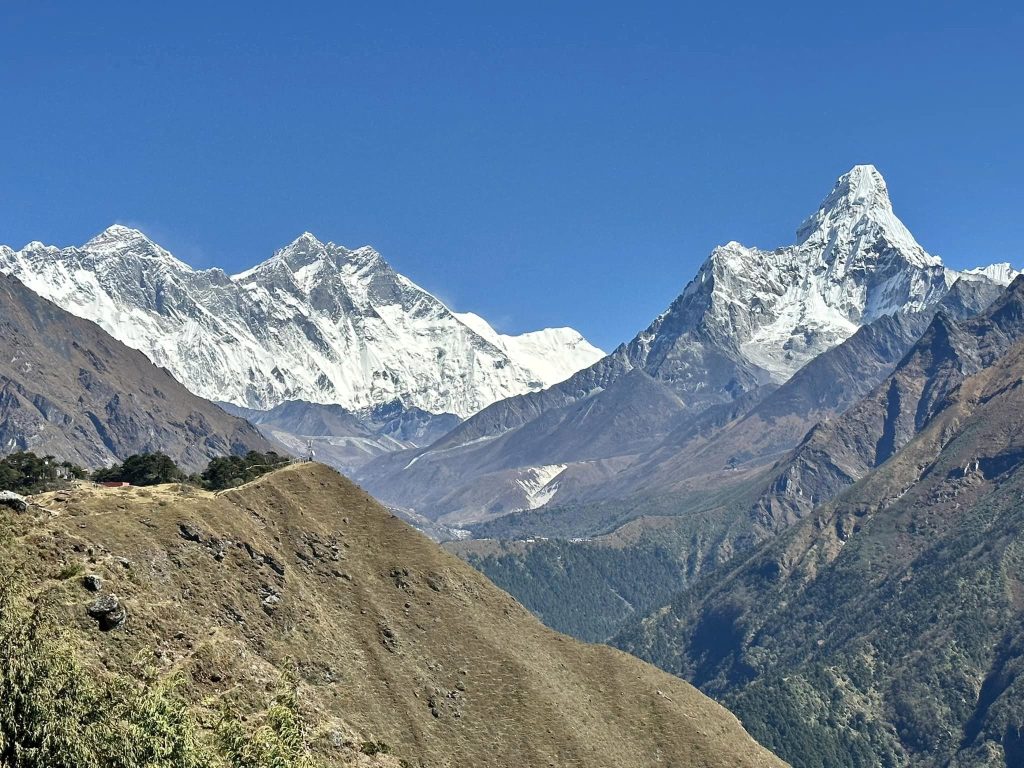Best time to climb Mount Everest is an important consideration for adventurers aiming to summit this renowned peak. Known in Nepali as Sagarmatha and in English as Mount Everest, it is famous worldwide for its towering height of 8,848 meters, making it the highest peak on Earth. This majestic mountain, often referred to as the “Top of the World,” has been a compelling mystery for mountaineers from across the globe. It is located in the Solukhumbu District of Nepal.

People also search when is the best time to do Everest Base Camp Trek.
Everyone want to be on the top of the tallest mountain in the World. But not everyone has courage to be on the top to step on Everest. Due to this cause, many people all over the globe come to Nepal. Height and beauty of the wonderful mountain attracts everyone. Due to this reason, mountaineers around the World come to Nepal and Tibet to summit the highest peak of the World.
Many people go to the Everest expedition without knowing the best season to go there and lacking the determination so many of them will not be able to summit the Everest or may lose their life. So it is essential to know best time so that you can successfully summit the Everest and return to your home safely with wonderful experience.
Also many people wonder when is the best time to Climb Mount Everest? Therefore, we are going to discuss about best time to go to Mount Everest. Although, Everest Expedition is best during spring and autumn, but also from April to May and from September to November mountaineers climb the Everest.





Useful Guide
To climb over the Everest one must know about the weather forecast. This will help you out to when to climb and where to rest and probable time that weather might go worst.
- Know about the customized weather reports on ExplorersWeb on free of charge.
- Download expeditions weather forecast on satellite phones and know about the weather.

Best Time to Climb Mount Everest
There are four season in Nepal autumn (Sep. Nov. and Oct.), winter (Dec. Jan. and Feb.), spring (March, April and May) and monsoon (June, July, and Aug.). Let you know about that
1.Autumn season;
In Autumn, there will be bright sun and temperature may be 20 degree but -12 degree cold night at the mountains . This is the best time to climb over the World Highest peak as temperature is good for you and climbing.
2. Winter Season:
During this season there will be heavy snowfalls and climate will be worst. This is the worst time to climb over the Mount Everest.
3. Monsoon Season:
There will be heavy rainfall and storms. Therefore, this season is not also best time to summit Everest.
4. Spring season:
There will be more warmer weather but more frequent storms and considerable snowfall at higher altitude. Its hard to predict about the mountain weather. This is the best time to climb as there will be warm more.
Hope these information will help you to know best time to climb Mount Everest.
Still have questions about the weather condition and best time to climb Mount Everest?
Call Himalayan Trekking, the best trekking agency in Nepal. +977-9851032316
Send an Enquiry
Error: Contact form not found.
© 2025 - Himalayan Trekking and Tours (P) Ltd. All Rights Reserved.

